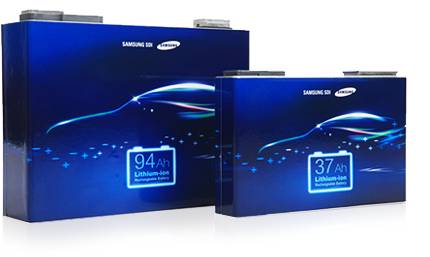Written in advance: Regardless of whether it is connected cars, autonomous driving or battery technology, many people still have little knowledge or understanding about these new technologies that have developed along with electric vehicles. Therefore, even though our account has many industry readers, we always advocate that we are electric vehicle enthusiasts. Because on the subject of electric vehicles, we are still beginners. In addition, we also hope to provide everyone with simple, easy-to-read, informative and opinionated content.
In this article, we will start with battery technology and provide a few basic concepts and explanations for novices. Please skip if you are a professional, but feel free to leave a message if you have any questions. PS. Although we have been busy recently and the update frequency has decreased, this account will continue (oh, it seems nobody is urging us to update…

Here, we welcome contributions. Please contact Daji (iidaji) for submissions.
Now, let us introduce our new author:
Alice Zhang
Alice Zhang is a recent graduate of mechanical engineering from Purdue University. She has been involved in Purdue Electric Racing for the past three years and served as the Battery Team Leader for the team during the 2015-2016 season.
The following is the article:
In the process of developing electric vehicles, the development of battery technology has played a decisive role. First of all, because batteries are largely limited by the energy density and packaging of chemical materials, the corresponding production cost of batteries also affects the development of electric vehicles to a large extent.
Battery technology development: From R&D to recycling
Figure-1 The development process of electric vehicle battery technology
(Source: BCG analysis)
The above figure is an excellent illustration of the value chain of electric vehicle batteries, which can be divided into seven parts:
- Development of anode and cathode materials;
- Packaging of single batteries;
- Combination of single batteries to form a battery module;
- Combination of module batteries to form a battery pack;
- Control temperature and energy output;
- Application of battery pack to electric vehicles;
- Research on the life and recycling of electric vehicles.# Development and Packaging of Cathode and Anode
Through the development and packaging of cathode and anode, the most common single battery (cell) on the market has been created. In the arrangement of batteries, in order to increase the capacity of the battery pack, parallel batteries are collectively referred to as a battery bundle. According to the different needs of manufacturers, the unit of serially connected battery bundles is called a battery module, and the sum of serially connected modules is the entire battery pack.
High Voltage and Low Voltage Battery Pack in Electric Vehicles
The battery pack in electric vehicles is divided into two groups: high voltage and low voltage battery. The high voltage battery pack (also known as a power battery pack, usually in the range of 150V to 380V) provides power source for the vehicle, while the low voltage battery is formed by the high voltage battery pack converting DC to low voltage (12V or 24V). The high voltage battery pack is used as the power supply device for the electric vehicle to drive its operation, while the low voltage battery is used for instrument panel lighting and auxiliary communication and lighting inside the vehicle. The high voltage battery pack capacity directly affects the mileage that the electric vehicle can run, while the battery pack capacity depends on the capacity of a single battery (cell capacity) and the arrangement and combination structure of the entire battery pack.
Why use Lithium-ion Batteries
The commonly used batteries on the market today are lead-acid batteries, nickel-metal hydride batteries, molten salt batteries, and lithium-ion batteries. Among them, the rated voltage of a single lithium-ion battery can reach 3.7 V, and its energy density can reach 265 W·h/kg, which is several times higher than that of other materials.
Lithium-ion batteries are widely used as the material for the battery in electric vehicles due to their relatively high voltage, light weight (over 1.5 times that of nickel-metal hydride batteries of the same weight), low self-discharge rate, no memory effect, and high energy density. However, the problem with using lithium-ion batteries is their relatively high price, which is the main reason why the prices of electric vehicles on the market today are high.
Comparison of Four Mainstream Electric Vehicles
Below are several mainstream electric vehicles on the market. We have selected four models with similar prices for comparison (although Tesla Model 3 has not yet been released, we have chosen Model 3 instead of Model S because of its similar price).
| Chevrolet Bolt | Nissan Leaf | BMW i3 | Tesla Model 3 | |
|---|---|---|---|---|
| Price | $36,620 | $31,600 | $44,450 | $35,000 |
| Range | 238 miles | 151 miles | 114 miles | 220 miles |
| Acceleration (0-60 mph) | 6.5 seconds | 7.9 seconds | 7.2 seconds | 5.1 seconds |
| Charging time (240V) | 9.3 hours | 7.5 hours | 4.5 hours | 6.3 hours |
Table-1 Comparison of Common Electric Vehicles (tax exclusive price in the US market, all equipped with the most basic configuration).As a pioneer in the electric vehicle industry, Tesla chose Panasonic’s 18650 battery. The significant difference compared to other electric cars is that Tesla uses cylindrical batteries, which reduces costs but has the disadvantage of significant unused space. With the advancement of technology, the battery capacity of 18650 has significantly increased. The capacity of a single battery can reach 3400 mAh, and its 18mm diameter and 65mm length left a lot of space for Tesla. Although the lifespan of 18650 is under scrutiny, it still has certain advantages based on its current performance.
Nissan Leaf and Chevrolet Bolt both chose AMP20 square batteries from the veteran battery manufacturer A-123. Although the AMP20 square battery is larger, its capacity has also reached 20 Ah. Due to its packaging advantages, the square battery reduces unused space and facilitates the integration of the entire battery pack.
BMW’s batteries are Samsung’s SDI 60 Ah and 94 Ah square batteries. BMW cooperates with Samsung to achieve direct production and packaging of a production line in the hands of the battery supplier, greatly simplifying the assembly process as Tesla’s Gigafactory does.
In addition to brand differences, the primary difference between these four electric vehicles depends on the battery packaging type. The main battery forms are cylindrical cells and prismatic cells. Cylindrical cells have the advantages of small volume and high energy density. However, due to the liquid electrolyte, the battery’s encapsulation is relatively fixed, requiring higher shell strength and explosion-proof considerations.
Tesla’s latest battery, 21-70, is shown below.
Prismatic cells, although larger than cylindrical cells, have a great capacity advantage due to their simple packaging of stacking anode-cathode materials using polymers. This is why Samsung’s latest SDI battery can achieve an amazing capacity of 94 Ah. Moreover, prismatic cells use solid electrolytes, and their design conditions are relatively safe and straightforward.
Samsung SDI Battery
The above is a brief summary of current electric vehicle battery technology, and with the current industrial research on emerging electrolytes and the joint efforts of major car manufacturers and battery companies, battery technology will certainly make greater breakthroughs in a certain period of time.


How to seize the opportunities of future automotive revolution
Staudt Löbel’s speech on how Tesla reshapes the grid of this century

This article is a translation by ChatGPT of a Chinese report from 42HOW. If you have any questions about it, please email bd@42how.com.
